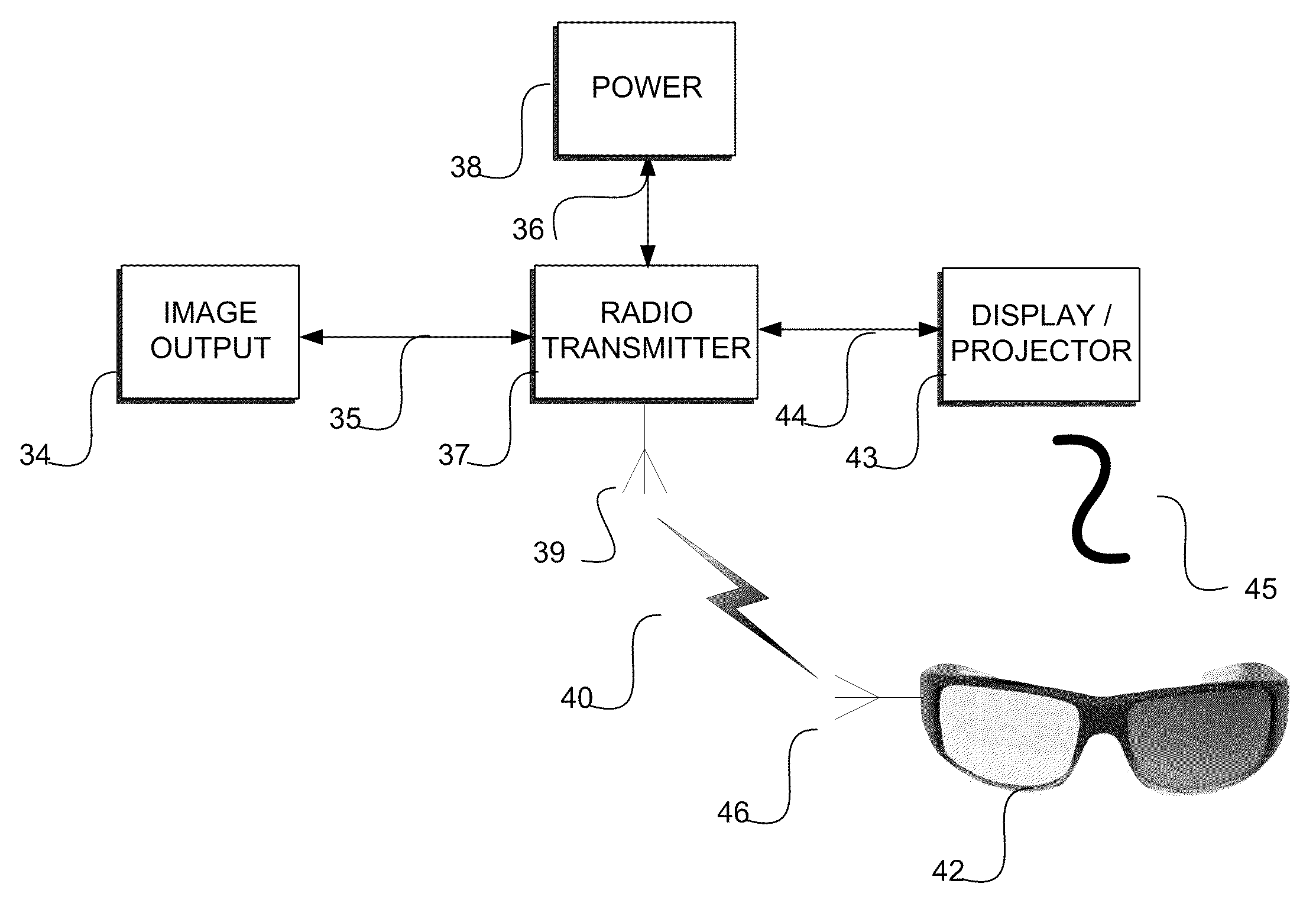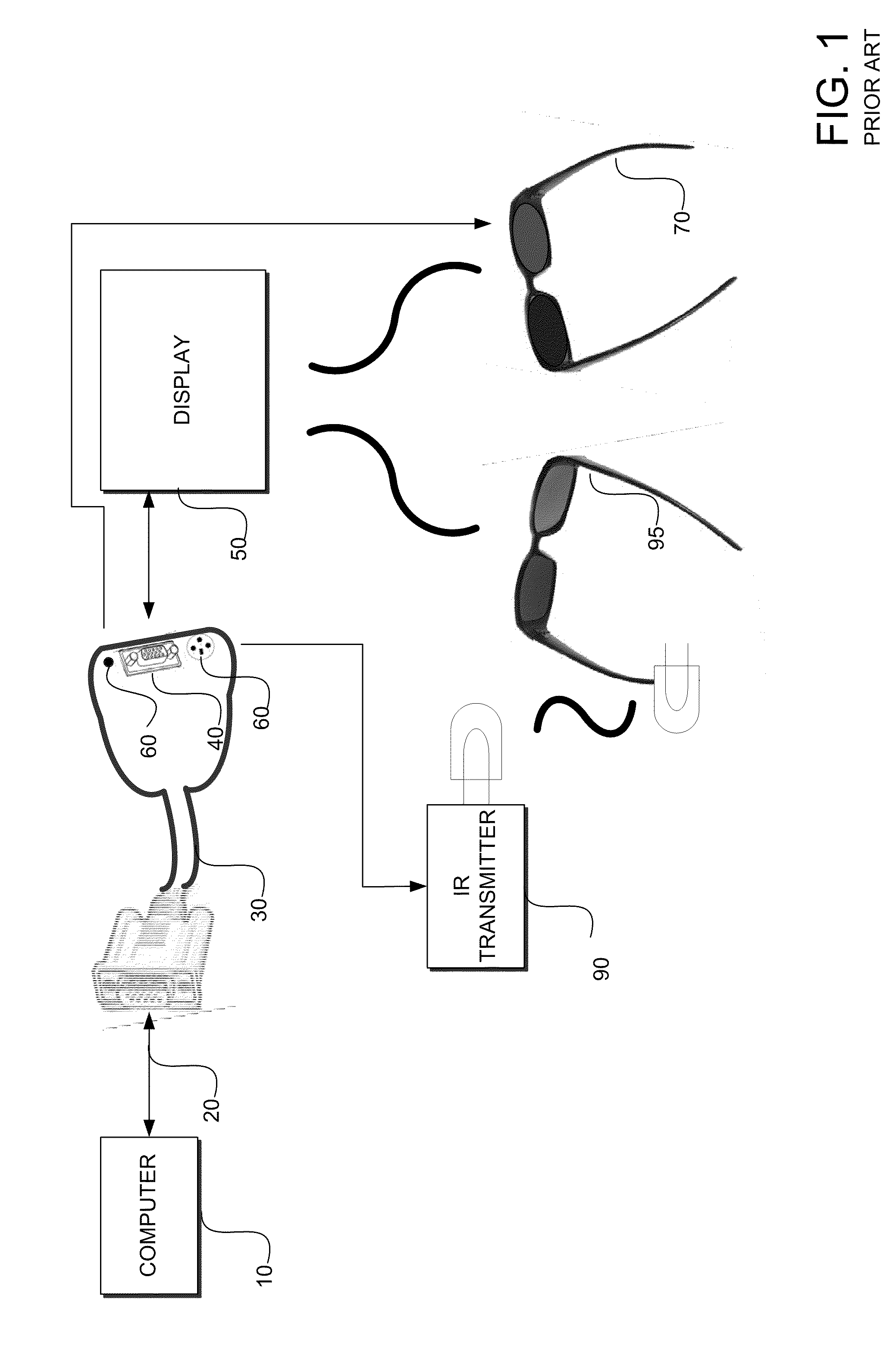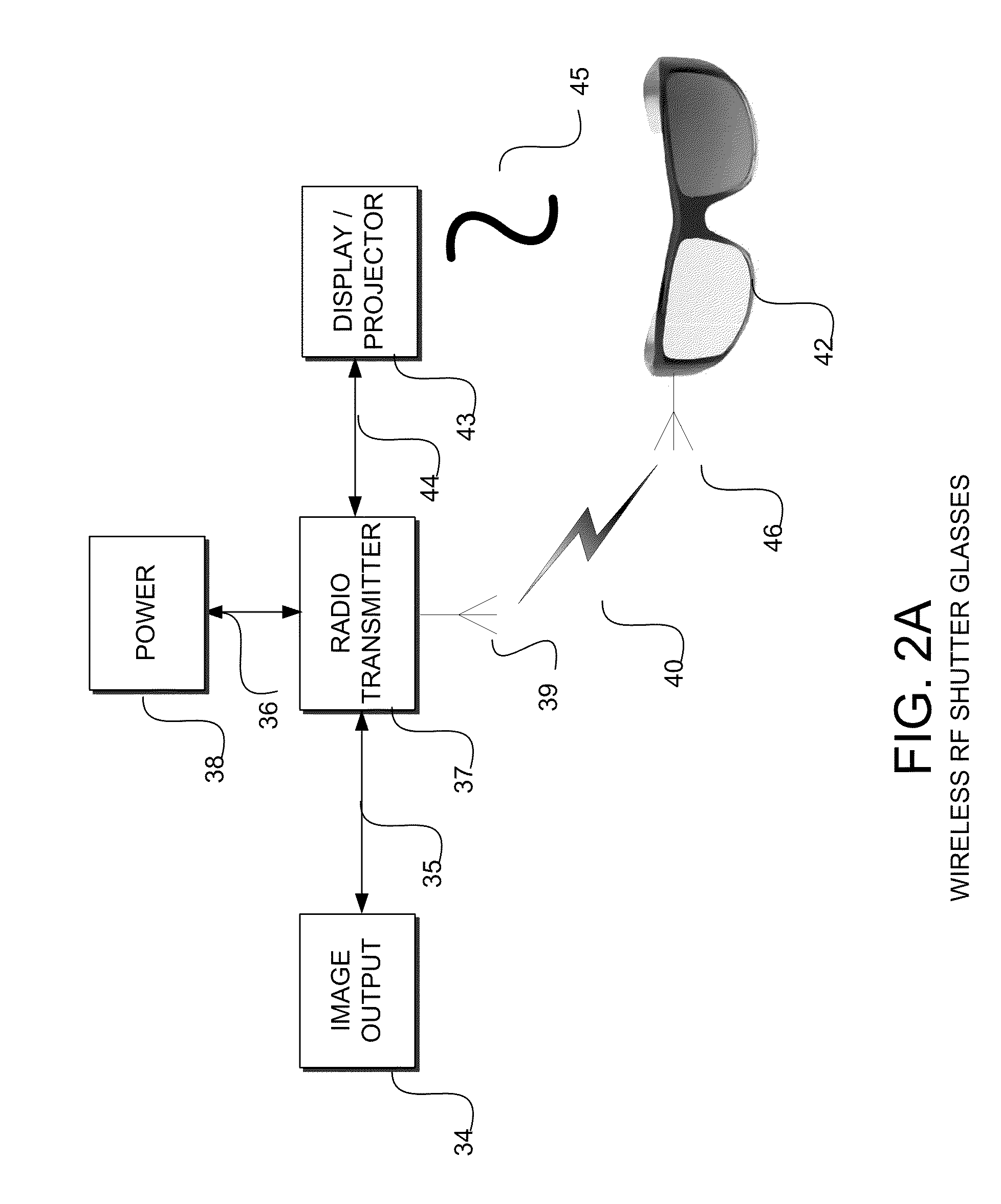System and method of displaying three dimensional images using crystal sweep with freeze tag
a three-dimensional image and crystal sweep technology, applied in the field of stereoscopic 3d image viewing methods and apparatuses, can solve the problems of system response to expensive silver or metalized reflective screens, system limited use in darkened environments, and screen synchronization is often too expensive for the average consumer, so as to simplify the user experience of wearing stereoscopic glasses, improve the level of synchronization, and improve the effect of synchronization
- Summary
- Abstract
- Description
- Claims
- Application Information
AI Technical Summary
Benefits of technology
Problems solved by technology
Method used
Image
Examples
Embodiment Construction
[0064]FIGS. 2A-D illustrate various embodiments of the present invention. In particular, FIGS. 2A-D illustrate various arrangements of embodiments of the present invention.
[0065]FIG. 2A includes a 3D source 34 of image data, a transmission device 37, a display 43, and shutter glasses 42. In various embodiments, 3D source 34 may be a computer, a Blu-ray or DVD player, a gaming console, a portable media player, set-top-box, home theater system, preamplifier, a graphics card of a computer, a cable box, or the like, and 3D display 43 may be any 3D display device such as an LCD / Plasma / OLED display, a DLP display, a projection display, or the like. In various embodiments, transmission device 37 and shutter glasses 42 may be embodied by a product developed by the assignee of the current patent application, Bit Cauldron Corporation of Gainesville, Fla. In some embodiments, shutter glasses 42 may be implemented with mechanical shutters or LCD shutters. For example, LCD shutters based upon tw...
PUM
 Login to View More
Login to View More Abstract
Description
Claims
Application Information
 Login to View More
Login to View More - R&D
- Intellectual Property
- Life Sciences
- Materials
- Tech Scout
- Unparalleled Data Quality
- Higher Quality Content
- 60% Fewer Hallucinations
Browse by: Latest US Patents, China's latest patents, Technical Efficacy Thesaurus, Application Domain, Technology Topic, Popular Technical Reports.
© 2025 PatSnap. All rights reserved.Legal|Privacy policy|Modern Slavery Act Transparency Statement|Sitemap|About US| Contact US: help@patsnap.com



